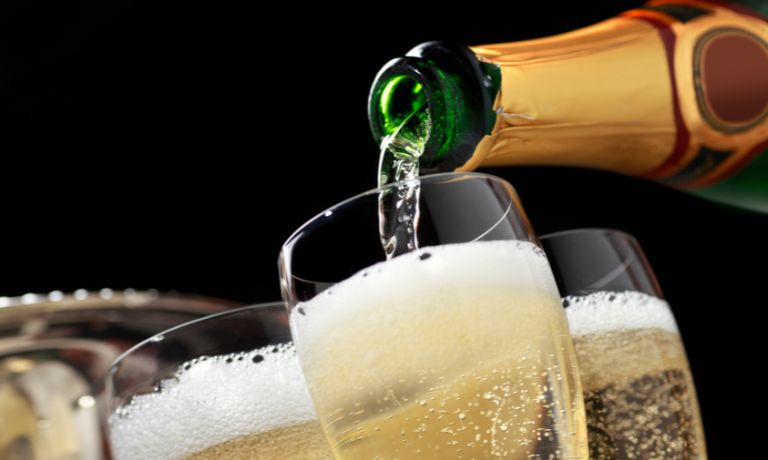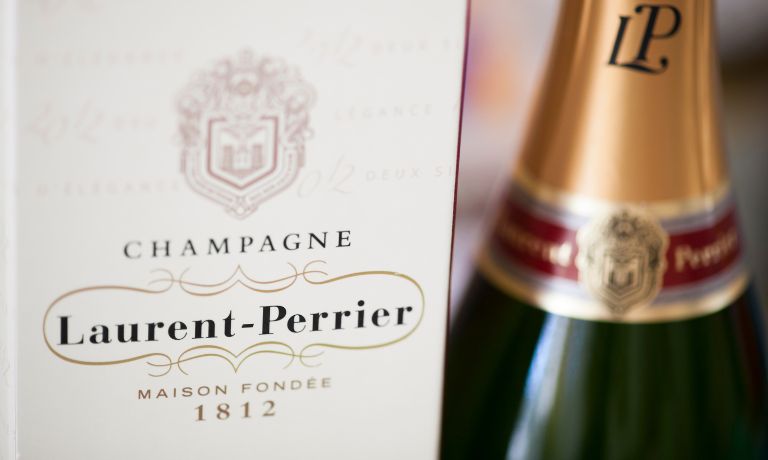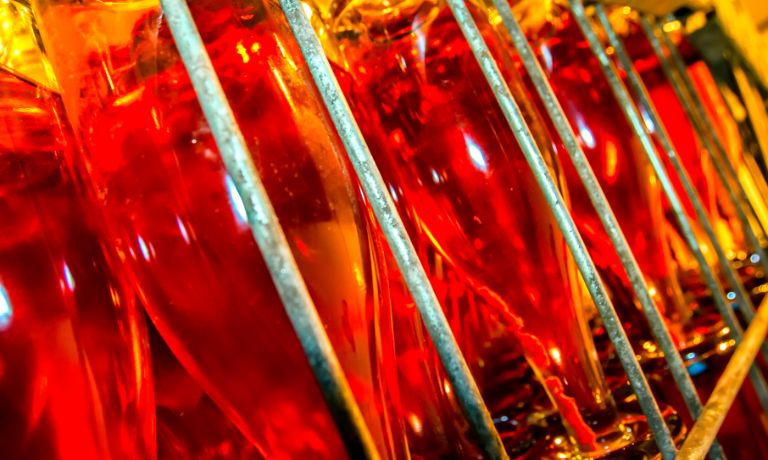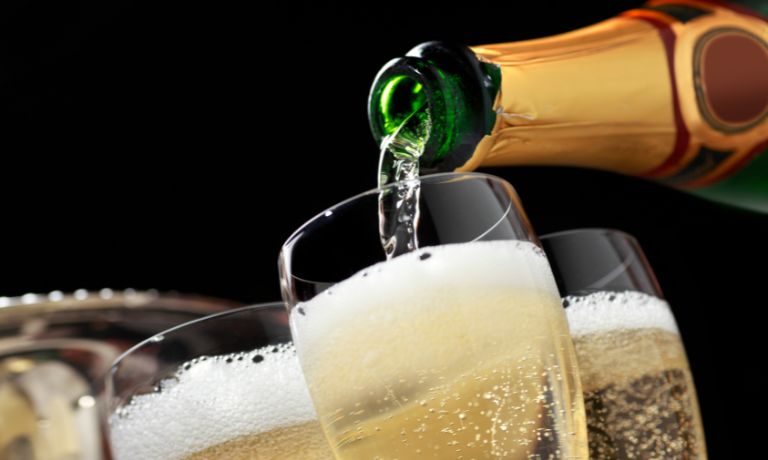Welcome to our discussion around the age-old riddle: Is champagne gluten-free? After all, it’s an iconic drink associated with celebration and luxury. Many people have the same question when considering whether or not to enjoy a glass of bubbly on special occasions.
In this blog post, we’ll take a deep dive into what makes champagne gluten-free (or not) and provide some other helpful information about drinking it safely. So let’s start finding out what remains: is champagne gluten-free?
What Is Champagne?
Champagne is a sparkling wine from the Champagne region of France. It is made using a special method known as the “methode champenoise”, in which secondary fermentation occurs in the bottle that produces carbon dioxide, creating bubbles.
The grapes used to make Champagne are usually Pinot Noir, Chardonnay, and Pinot Meunier. The wine is aged in the bottle for at least 15 months before being released.
Champagne is typically served chilled as an accompaniment to food or as an aperitif. It can be enjoyed independently or mixed into cocktails such as mimosas and bellinis. The flavor profile of Champagne depends on the blend and length of aging, with more aged Champagnes having a richer taste.
Whether celebrating a special occasion or enjoying a glass of bubbly at home, Champagne will bring sophistication and joy to any gathering.

Champagne
Different Types Of Champagne
There are several types of Champagne, each with its own unique flavor profile.
Brut is the most common type of Champagne and has a dry taste with crisp acidity.
Blanc de Blancs is made entirely from Chardonnay grapes and has a light body and subtle flavors.
Rosé Champagne is made from a blend of red and white grapes, resulting in a pink hue and floral aromas.
Demi-sec is sweet and fruity, while Extra Dry is slightly sweeter than Brut.
Finally, Prestige Cuvée is the most premium type of Champagne and has intense flavors with a full body. All types are delicious and can be enjoyed independently or paired with food.
What Is Gluten Free?
Gluten-free is a term used for foods that do not contain gluten.
Gluten is a protein found in wheat, barley, and rye. It can cause allergic reactions or other health problems in people with celiac disease, non-celiac gluten sensitivity, and wheat allergies.
A gluten-free diet eliminates all sources of gluten, including wheat, barley, and rye.
There is an increasing number of options available today for those seeking to follow a gluten-free lifestyle. Many grocery stores now provide gluten-free options in their aisles and restaurants offer meals free from gluten-containing ingredients.
Additionally, many food manufacturers have begun producing gluten-free versions of popular foods, such as crackers and pasta.
When shopping for food products, paying attention to the labels is important. Products that are labeled “gluten-free” must contain less than 20 parts per million (ppm) of gluten, according to the Food and Drug Administration (FDA). This can help ensure the product is safe for those with gluten sensitivities.
While a gluten-free diet may benefit some people, it’s important to consult a doctor before eliminating certain foods. It’s also essential to get enough dietary fiber and other essential nutrients on this type of eating plan, so it’s important to talk with a healthcare professional about what foods and supplements may be beneficial.
Is Champagne Gluten Free?
Most Champagnes are produced with grapes and do not contain any gluten-containing ingredients. Still, some Champagne producers add other small amounts of wheat or rye flour during winemaking.
This is done to help capture some yeast in the bottle, which creates a bubbly effervescence. While this is an accepted practice in winemaking, it may concern those particularly sensitive to gluten or have Celiac Disease.
To be on the safe side and avoid any potential cross-contamination of gluten, look for Champagnes that are labeled as gluten-free. This means that either no wheat or rye flour was used during the winemaking process, or the Champagne has been tested and found to contain less than 20 parts per million of gluten.
What Are The Health Benefits Of Gluten-Free Champagne?
Gluten-free champagne can provide several potential health benefits for those sensitive to gluten. Gluten is a protein that can cause digestive distress and other symptoms in some individuals. Switching to gluten-free champagne eliminates any risk of cross-contamination or accidental ingestion of this allergen.
In addition, gluten-free champagne is often made with other alternative grains, such as millet and buckwheat, which can offer several nutritional benefits.
The alternative grains used in gluten-free champagne contain higher amounts of fiber than those found in traditional champagnes, providing a greater sense of satiety. Fiber also helps to regulate the digestive system and is important for maintaining a healthy gut environment.
Gluten-free champagne also contains lower levels of carbohydrates, which can be beneficial for those looking to monitor their blood sugar levels. Not only does this help to reduce the risk of developing diabetes, but it may also benefit individuals who already have the condition. By avoiding higher glucose levels in the diet, they can help keep their glucose levels more consistent.
Finally, gluten-free champagne is often made with fewer additives and preservatives than traditional champagne, which can offer additional health benefits.
This type of beverage is typically produced without any added sulfites or other chemicals, making it a healthier option for those looking to reduce their intake of artificial ingredients.
Additionally, gluten-free champagnes may contain higher levels of polyphenols, which are natural antioxidants that can help protect the body from the damaging effects of free radicals.
ALSO READ: Is Jack Daniels Gluten Free? Here’s The Truth
What Champagne Brands Are Gluten-Free?
Some of the most popular champagne brands that are gluten-free include Veuve Clicquot, Moët & Chandon, Perrier-Jouët, Krug, and Ruinart.
All of these champagnes are certified to contain less than 20 parts per million (ppm) of gluten—the lowest level detectable by current testing methods.
This makes them safe for those who are gluten intolerant or have celiac disease to enjoy, though always consult a doctor before consuming any alcoholic beverage.
Additionally, some specialty brands such as Henriot and Pol Roger offer champagnes that are gluten-free. For more information about gluten-free champagne brands, it’s best to research the brand you are considering.

Champagne Laurent-Perrier Brut
How Should You Store Champagne?
Champagne should be stored upright in a cool, dry place with consistent temperatures between 50-59°F (10-15°C). The ideal storage location is away from direct sunlight to protect it from harmful UV rays, which can damage the taste and color of the champagne. An unheated basement or cellar is ideal for storing champagne if the temperatures remain consistent.
It is important to ensure that the cork remains moist so it doesn’t shrink and allow air into the bottle. If you plan on keeping a bottle of champagne for an extended time, consider using a vacuum wine sealer to help preserve the taste and quality of the champagne. For short-term storage, you can keep your champagne in the refrigerator for up to two weeks.
Champagne Production: Cross-Contamination Risk With Gluten
With the growing popularity of sparkling wines from other parts of the world, it is important to consider the possibility of cross-contamination with gluten during the production process.
While Champagne has been produced in France since at least 1693, and its method for producing sparkling wine is very specific, there are many different ways these wines may be made using various ingredients and production methods.
Cross-contamination with gluten can most likely occur when wines from other parts of the world are produced in the same facility as Champagne.
This may happen if a winery uses the same equipment for producing multiple types of sparkling wine or if an ingredient or additive used in one region is also used in another.
To reduce the risk of cross-contamination with gluten, wineries should use dedicated production lines and equipment exclusively for Champagne and take extra precautions when purchasing ingredients or additives from other regions.
Furthermore, any changes to production processes should be carefully monitored to ensure compliance with Champagne standards.
Finally, because raw materials and additives will often be used in multiple batches of wine, wineries should strive to keep lots separate so that any potential cross-contamination can be identified quickly.

Champagne Production
Common Mistakes To Avoid When Choosing A Gluten Free Champagne
Whether you are new to the gluten-free lifestyle or an experienced connoisseur, some common mistakes should be avoided at all costs. We’ll explore these key points in this section – so pour yourself a bubbly and let’s get started!
- Not Checking for Gluten-Free Certification: It is important always to check the label of any product that claims to be gluten-free. Look for certifications such as “Gluten Free Certified” or similar symbols, which third-party organizations provide.
- Not Reading Ingredients Lists: You should always read the ingredients list on the back of the bottle or can before purchasing any champagne. Remember that even if a product is labeled as gluten-free, some ingredients might contain hidden sources of gluten, such as barley, rye or wheat.
- Not Checking Processing and Manufacturing Facilities: It is also important to check the processing and manufacturing facilities of the champagne before purchasing it. Many champagnes are made in shared facilities where gluten-containing products are processed, so cross-contamination can occur if proper precautions are not taken.
- Not Asking the Right Questions: When in doubt, always ask questions! Talk to your local wine store or contact the manufacturer directly if you have questions about their products and processes.
- Not Considering The Price Point: While it might be tempting to go for the cheapest option, you should always pay careful attention to the price point of your champagne. Gluten-free champagnes tend to be more expensive than their gluten-containing counterparts due to the extra processing and certification required.
By following these five tips and avoiding common mistakes, you can be sure that your gluten-free champagne selection is safe and enjoyable.

Rosé Champagne
FAQs
Which Alcohol Contains Gluten?
Most alcoholic beverages are gluten-free, but some contain trace amounts of gluten.
Beer and malt liquors typically contain higher levels of gluten than other types of alcohol. Distilled spirits like whiskey and vodka usually do not contain any detectable amounts of gluten.
Does Korbel Champagne Contain Gluten?
No, Korbel Champagne does not contain any gluten. Grapes, yeast, and sugar are the only ingredients used to produce Korbel Champagne. All of these ingredients are naturally gluten-free.
Does Dom Perignon Have No Gluten?
No, Dom Perignon is not gluten-free. It contains wheat-derived ingredients, so it should be avoided if you have a gluten intolerance or sensitivity.
Is Bud Light Free Of Gluten?
No, Bud Light is not gluten-free. Although many beers are brewed with ingredients that do not contain gluten, some beer brands may still contain traces of gluten.
What Alcohol Contains No Gluten At All?
Most distilled spirits, including vodka, rum, whiskey, gin, tequila and brandy, are gluten-free.
However, some flavored varieties may contain added ingredients that contain gluten, so it is important to check the label.
How Can You Determine When Champagne Is Bad?
Champagne can go bad if it is stored incorrectly or for too long. It should be kept in a cool, dark place below 75 degrees Fahrenheit and away from direct sunlight.
You may also notice signs of spoilage, such as unpleasant odors, off-tastes or sediment forming at the bottom of the bottle.
How Should You Serve Champagne Properly?
Champagne should be served in a flute or tulip-shaped glass specifically designed for sparkling wines. The glasses should also be chilled before use and never filled more than two-thirds full to allow the bubbles to expand properly.
Additionally, champagne should always be poured slowly down the side of the glass rather than straight into the center.
Does Gluten-Free Prosecco Champagne Exist?
Yes, several brands of gluten-free Prosecco sparkling wines are available on the market. These wines should be clearly labeled as “gluten-free” and will have a symbol of an ear of wheat crossed out indicating that they are free from any traces of gluten.
Does Moet Champagne Contain Gluten?
Moet & Chandon Brut Imperial is a gluten-free champagne. However, some of the flavored varieties that contain added ingredients may contain gluten, so it is important to check the label for any potential allergens.
Does Korbel Champagne Contain Gluten?
Korbel Brut, Extra Dry and Sweet Cuvees are all gluten-free champagnes.
Does Dom Perignon Champagne Contain No Gluten?
Yes, Dom Perignon is a gluten-free champagne.
How Long Is Champagne Good For Storage?
Champagne is best enjoyed within a year of opening. It can last several years if stored correctly in a cool, dark place at temperatures below 75 degrees Fahrenheit and away from direct sunlight.
However, the sparkling bubbles will weaken over time and eventually dissipate completely.
Can You Keep Champagne In The Fridge?
Yes, storing champagne in the fridge at temperatures between 41 and 55 degrees Fahrenheit is recommended.
Will Champagne Spoil?
Yes, like any other alcoholic beverage, champagne can spoil if it is not stored correctly or left open for too long.
How Can You Know If Champagne Doesn’t Contain Gluten?
Most champagne is gluten-free, but it is always advisable to check the label of any brand you are considering.
Look for an indication that the champagne is free from allergens or for a symbol of an ear of wheat crossed out. This indicates that it is free from any traces of gluten.
Can Champagne Be Mixed With Other Drinks?
Yes, champagne can be mixed with other drinks to create a variety of cocktails. Popular champagne-based cocktails include the French 75 and the Bellini.
It is important to remember that some flavored varieties may contain added ingredients that contain gluten, so it is important to check the label before consuming. Also, always choose gluten-free mixers if you want a gluten-free beverage.
Is Warm Champagne An Option?
No, champagne should never be served warm. The sparkling bubbles must remain cold to maintain their effervescence and should always be served chilled.
Conclusion: Is Champagne Gluten Free?
Now you should know “Is champagne gluten-free?”. Most champagne is gluten-free. This makes it an ideal option for those looking to enjoy a bubbly beverage without worry of potential gluten sensitivities or allergies. While sparkling wines made with other grains may contain traces of gluten, this is not true with traditional champagnes.
Thus, those following a gluten-free diet can easily enjoy a glass of champagne and celebrate any occasion. However, remember that some champagnes may contain added ingredients made with wheat or barley malt, so it is always important to read labels carefully and consult with your medical team before consuming a product if you have any questions or concerns.


